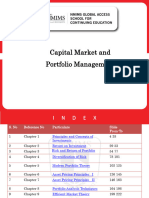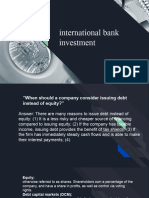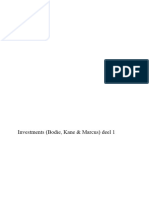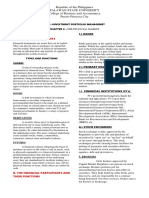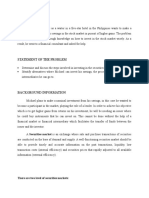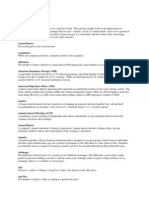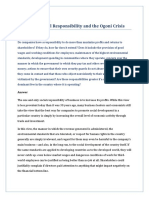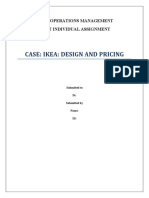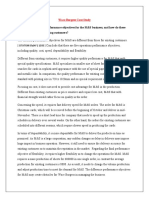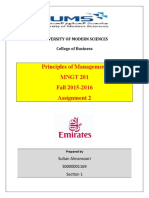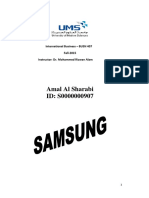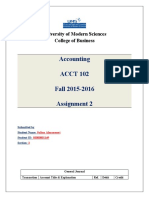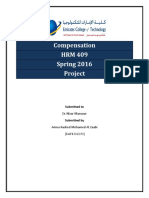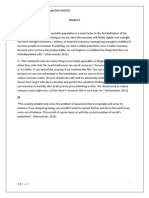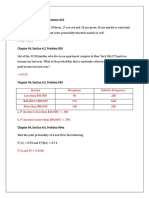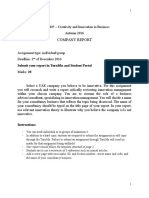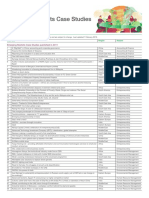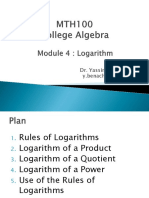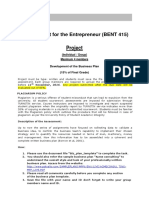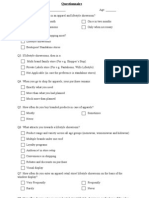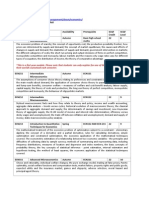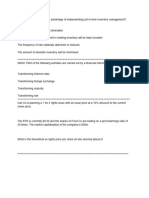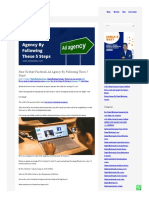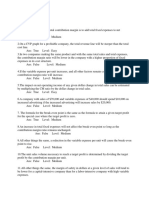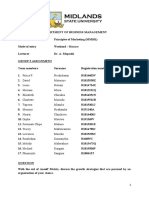FINA 350
Fall 2015/2016
INVESTMENT ANALYSIS
Assignment 1
TERMINOLOGIES IN INVESTMENT
Submitted to : Dr. Ismail Abdulsalam
Submitted by :
Name : Sultan Almansoori
Id : S0000001169
Section : 3
Analyst
�Person who studies an industry sector and makes buy hold and sell recommendations
also, a different term referring to entry-level career position in many investment banks
Asset
An item with economic value that is owned or controlled by an individual, business or
government
Bear
Investor who sells believing prices will fall.
Bid price
The price at which the market maker will buy.
Bonds
A government or company can raise capital by issuing a bond. Bondholders receive
interest (a ‘coupon’) and the capital is repaid at maturity. The difference between bonds
and loans is that bonds can be traded between investors (who are lending to the
issuer).
Broke
Intermediary between a buyer and a seller, receiving commission on the trade.
Brokerage
The payment from the client to the broker
Bull
Investor who buys believing prices will rise.
Capital markets
The market for long-term funding, egg bonds and equity
2
� Casino banking/finance
A colloquial term used to describe an investment approach in which investors at
commercial banks employ risky financial strategies to earn large rewards.
Chinese walls
Information barriers within investment banks to manage potential compliance and
conflict of interest issues
Clearing
The mechanism for making transactions happen: matching the buyer and seller,
making sure the buyer has the cash and the seller has the securities.
Commodities
Goods such as oil, petrol, metal or grain
Credit crunch
The term that has come into common usage to refer to a severe shortage of money or
credit. The start of the global credit crunch can be dated to august 2007 when default
rates on sub-prime loans in the us housing market rose to record levels.
Credit default swap
Insurance-like contract that transfers credit risk. The buyer of the swap makes
payments to the seller in exchange for protection in the event of a default.
Debt capital markets (DCM)
Investment bank division responsible for issuance and pricing of debt securities (egg
bonds).
3
� Derivatives
The group term for financial contracts between buyers and sellers of commodities or
securities. Includes futures, options or swaps Derivatives allow profit from the rise (or
fall) of a commodity or security, without actually buying the underlying well.
Equity
Otherwise referred to as shares. Shareholders own a percentage of the company, and
have a share in profits, as well as control via voting rights.
Equity capital markets (elm)
Investment bank division responsible for structuring and pricing the issuance of equities,
such as at iPod (initial public offering – flotation of the company on the stock exchange)
Futures
Contract between two parties to trade a commodity or security at a fixed price and a
fixed future date
Gilts
Bonds issued on behalf of the up government to fund spending. Known as ‘gilt-edged
securities’ because the bond contracts used to have gold round the edge.
Hard market
A scarcity of a product or service for purchase, as opposed to a soft market, in which
the product or service is readily available
Interest rates
Lenders demand interest on loans. The rate is dependent on future inflation
expectations, as well as the ‘real interest rate’ – the rental cost of money. Borrowers
might pay extra on top in order to compensate lenders for the credit risk.
4
� Investment bank
A bank providing financial services for governments, companies or very wealthy
individuals, as compared to commercial banks, which provide loans and savings
accounts to the general public
Investment management
The buying and selling of securities (see securities) and assets (see asset) within a
portfolio to achieve investment objectives
Investment trust
Similar to unit trusts – collective investment but with a different structure. Investment
trusts’ value fluctuates with demand for shares on the stock market the price of an
investment trust does not necessarily equal the price of its underlying assets.
Leveraged buyout (lob)
Takeover of a company funded by high-risk bonds or loans
Leveraging
Using debt to supplement investment an institution that has borrowed heavily in addition
to its funds or equity to finance growth is said to be highly leveraged.
Liquidity
Ability of an asset to be traded quickly without changing the market price
Portfolio
Collection of securities held by an investor. Also known as a ‘fund’
Principal
An investor who trades for his/her own account and risk
5
� Private equity
High risk and high return investment, holding large stakes in illiquid companies.
Proprietory trading
Trading carried out using the firm’s capital on its own behalf.
Pure risk
A type of risk where the only consideration is the possibility of loss. Speculative risk in
contrast offers the possibility of loss or gain.
Risk management
Management of the pure risks to which a company might be subject. It involves
analyzing all possible risks and determining how to handle this exposure through trading
out, or transferring the risk with derivatives.
Securities
Generic term for bonds, gilts and equities.
Settlement
Once a deal has been made and clearing taken place, stock and cash transfer between
seller and buyer.
Spread
Difference between bid and offer price – one way in which banks make profits.
Stagflation
A combination of stagnation and inflation, when economic growth slows as prices
continue to rise.
Sub-prime loans
6
�High-risk loans to clients with poor or no credit histories.
Swap rates
The borrowing rates between financial institutions...
Universal bank
Bank offering financial services typical of both investment and commercial banking to
consumers and small businesses as well as corporate clients.
Yield
The total return on a security expressed as a proportion of its price.


